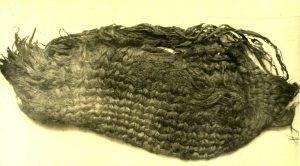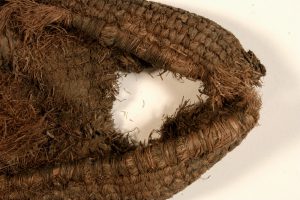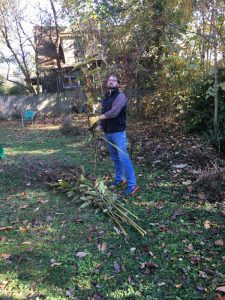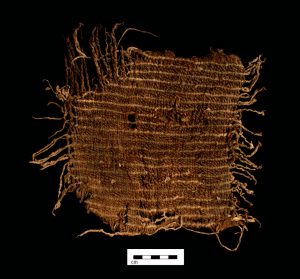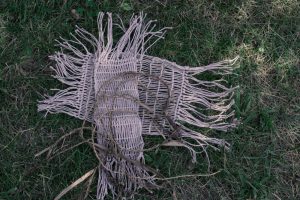You’ve been asking us for years, and we are so excited to be able to deliver what you want: digital issues of PLY!
Since this is new, we’re going to try to answer all the questions we can, so keep reading! (Be sure to make it to the end, because we’ve got a giveaway to announce, too!)
Why digital?
Some people really love the feel of a good magazine in their hands. They like to flip through the smooth, sturdy pages and feast their eyes on all the glossy glory of a print magazine.
Other people really prefer to take their magazines in digital format. They like being able to carry all their favorite issues on one device, and to store PLY without taking up any shelf space.
We like serving both kinds of people, so we’re offering digital issues to anyone who wants them! We also know that this will be really helpful to overseas spinners, who will now be able to subscribe to PLY or pick up individual issues without the hefty cost of international shipping.
How does it work?
The digital version of PLY will work just like the print version – you can subscribe and get each new issue as it comes out, or you can pick up individual issues that strike your fancy.
If you want to subscribe to the digital version of PLY, you can click here to check out our subscription page like you’ve always done; you’ll see the option to choose digital or print. When a new issue comes out, we’ll send all current digital subscribers a link to download the digital version using a special password.
For individual back issues, you’ll find the digital version right alongside the print versions, on this page. Just pick an issue and choose “digital” in the drop-down menu. Every single issue is now available in a digital version, so pick your favorites!
We’ve also got back issue bundles! You can purchase every issue we’ve ever printed or buy them by the year, for a discounted price. You’ll find those on the back issues page as well.
What does this mean for the print version/my subscription?
If you’re already subscribing to the print version of PLY, nothing is going to change! You’ll have the option at renewal to switch over to digital if that’s your preference, but you can keep on getting that print edition for as long as you’d like. We really love printing this magazine, and we take a lot of pride to make it a high quality publication that feels as good in your hands as it looks! So don’t worry – we won’t be giving up on our print edition any time soon! We are, first and foremost, a print magazine. Going digital is simply a way for us to serve more spinners, which is what we aim to do with everything we create. It’s an add-on, not a replacement!
If you’d like to change your remaining subscription to digital instead of print, we can do that. We can also ADD digital issues to your remaining print subscription, if you’d like to get both! Just send us an e-mail (contact.us AT Plymagazine DOT com) and we will hook that up for you!
How much will it cost?
A digital subscription will be $36/year, which allows us to produce the same quality you’ve come to expect from PLY‘s print version, and continue to pay our contributors fairly, but also offer a price break to those folks who can’t afford the international shipping prices for the print edition. Individual digital issues will be $10.
Just like with the print version, we’ll be offering a discount on bundled issues! You’ll be able to buy a full year of issues (a calendar year containing 4 issues, spring-winter) for $30, and you’ll score a big discount if you buy the full bundle of all back issues (that’s 17 digital issues of PLY!) for $85 (a 50% savings off the regular price). We’ll update this price with each issue but buying the whole lot will always be 50% off.
How will I get my issues?
You’ll purchase an individual issue from our shop or a digital subscription just the same way you would with the print version, on our subscription page. Then you’ll be directed to a page with your download link and we’ll also send you a link via e-mail with a personal password unique to you (and on record with us) to download the PDF of your issue(s), which you can read in your browser, Adobe reader, iPad, phone, or your favorite way to read – both in single page or 2-page view. Your password is attached to the PDF and the PDF can’t be opened without entering your personal password. These issues are copyrighted so please don’t distribute or share.
After you Buy: Digital FAQs
If you don’t get an email with the download code:
Please just be patient! The system sometimes isn’t able to respond immediately, but you should get your e-mail from us within about 24 hours. If you don’t have it, please search your email: it should have a subject line of “Your PLY Magazine purchase of DATE”. Still don’t have it? Email jess.cook@plymagazine.com to get your download links!
If you don’t know your password:
For subscriptions, we’ll send you the password when we send you the link to download the newest issue. For back issues, the password you’ll need is the e-mail address you used when you bought the issue(s).
If you’re getting an error message or can’t open your magazine:
You should be downloading your issues to your own device, not using the link we give you to access it over and over. You are purchasing it and it’s yours! If you use the link we give you, you won’t be able to access it anywhere anytime (and it bogs down our servers and causes the craziness of the last few days). I didn’t figure out that this was happening until just now. The link we give you is just to download it and you should just use it once per device (like, once for your computer and once for your ipad, or once for your phone etc).
If you are unsure about how to download, read on!
When you have the magazine opened up from the link we give you, put in your password and it will open. Now in the upper right corner (run your mouse over that area if you don’t see it), there will be 3 icons, the middle one with the arrow pointing down is what you want to click on — that’s the download button. It will ask you where you want to download it, choose somewhere you can remember, maybe your desktop for now. You can move it anywhere any time.
Once it downloads (will take a minute or so), open it up, put in your password, and now it’s yours and will always open!
If you still have questions or something isn’t working right, please get in touch! Jess.cook@plymagazine.com
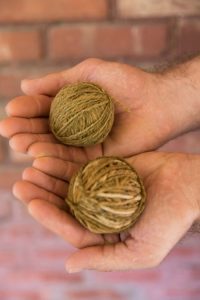 Yarns exist on a spectrum with the most intimidating (and sometimes unattainable) ones at each end – TRUE WOOLEN and TRUE WORSTED. Everything else is in between, and it’s this everything else that the Semi issue is focused on. Honestly, it’s probably what most of us spin most of the time, so get ready for an issue that’s about your yarn.
Yarns exist on a spectrum with the most intimidating (and sometimes unattainable) ones at each end – TRUE WOOLEN and TRUE WORSTED. Everything else is in between, and it’s this everything else that the Semi issue is focused on. Honestly, it’s probably what most of us spin most of the time, so get ready for an issue that’s about your yarn. With those results in mind, what about end uses? Which semi- yarns are best for which applications? We’ve got that, too! We’ve also got Russian spindles (like you’ve never seen them before), a hot button where nobody really agrees, semis for weaving, a Guilded about spinning embroidery thread, and 2 fantastic projects, one knit and one crochet. So don’t miss this informing and gorgeous issue where we give you the information to finally decide: is the yarn semi-woolen or semi-worsted (does it rely on prep or draft?) or, and this is a new one, is it really the fiber?
With those results in mind, what about end uses? Which semi- yarns are best for which applications? We’ve got that, too! We’ve also got Russian spindles (like you’ve never seen them before), a hot button where nobody really agrees, semis for weaving, a Guilded about spinning embroidery thread, and 2 fantastic projects, one knit and one crochet. So don’t miss this informing and gorgeous issue where we give you the information to finally decide: is the yarn semi-woolen or semi-worsted (does it rely on prep or draft?) or, and this is a new one, is it really the fiber?
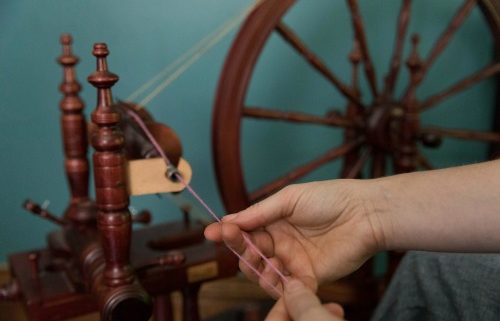
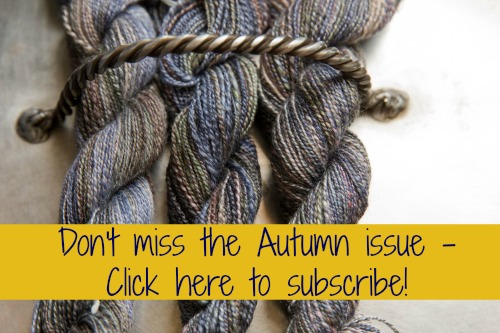
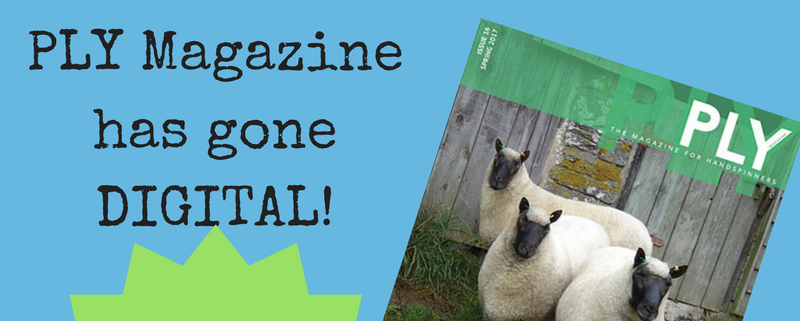
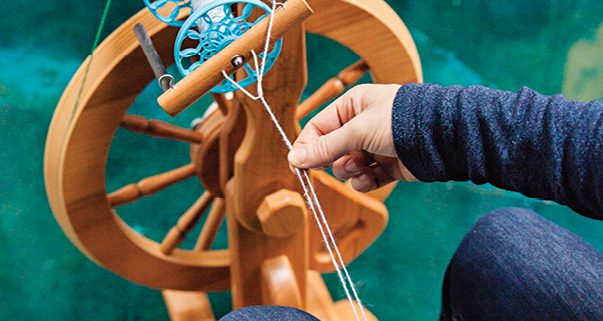
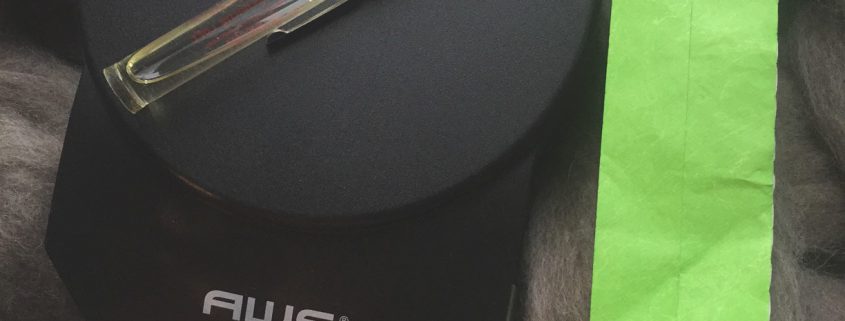
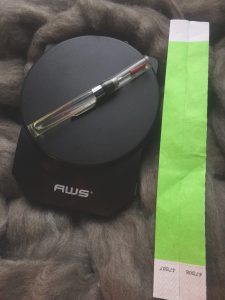
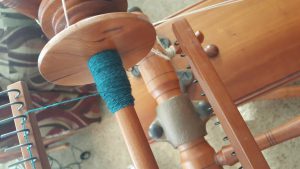
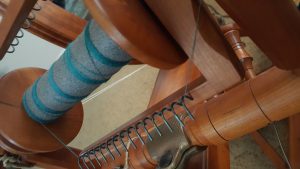
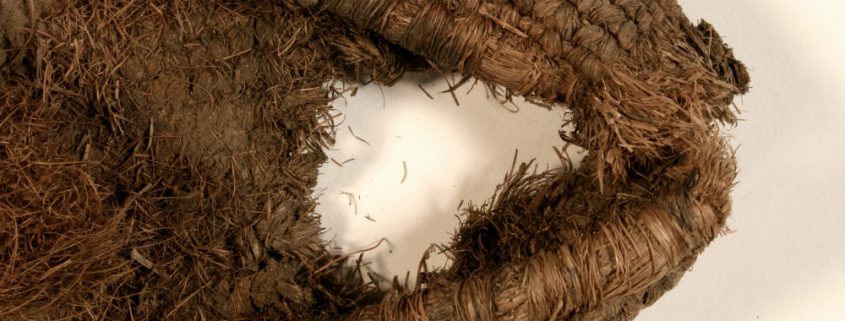
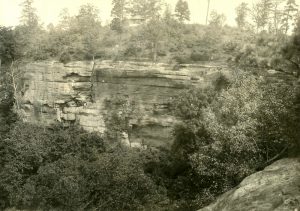 Footwear from 2,000 years ago is really different from what most of us wear today. Going barefoot was probably not uncommon, but there were times when you wanted something on your feet. For example, imagine exploring a cave barefoot. How far could you walk barefoot? Probably not very far. Mammoth Cave in Kentucky is the longest cave system in the world (over 400 miles and counting!) and ancient peoples had explored much of it thousands of years ago. We know they wore slippers because we have found slipper fragments inside the cave.
Footwear from 2,000 years ago is really different from what most of us wear today. Going barefoot was probably not uncommon, but there were times when you wanted something on your feet. For example, imagine exploring a cave barefoot. How far could you walk barefoot? Probably not very far. Mammoth Cave in Kentucky is the longest cave system in the world (over 400 miles and counting!) and ancient peoples had explored much of it thousands of years ago. We know they wore slippers because we have found slipper fragments inside the cave.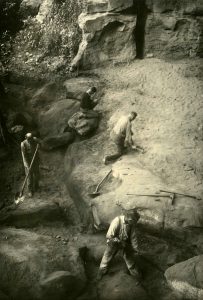 Several of the slippers were excavated from rockshelters in the 1920s and 1930s as a part of the Works Progress Administration (WPA). These images are from a rockshelter in Lee County in Kentucky that produced three of the slippers. Images courtesy the William S. Webb Museum of Anthropology, University of Kentucky.
Several of the slippers were excavated from rockshelters in the 1920s and 1930s as a part of the Works Progress Administration (WPA). These images are from a rockshelter in Lee County in Kentucky that produced three of the slippers. Images courtesy the William S. Webb Museum of Anthropology, University of Kentucky.
